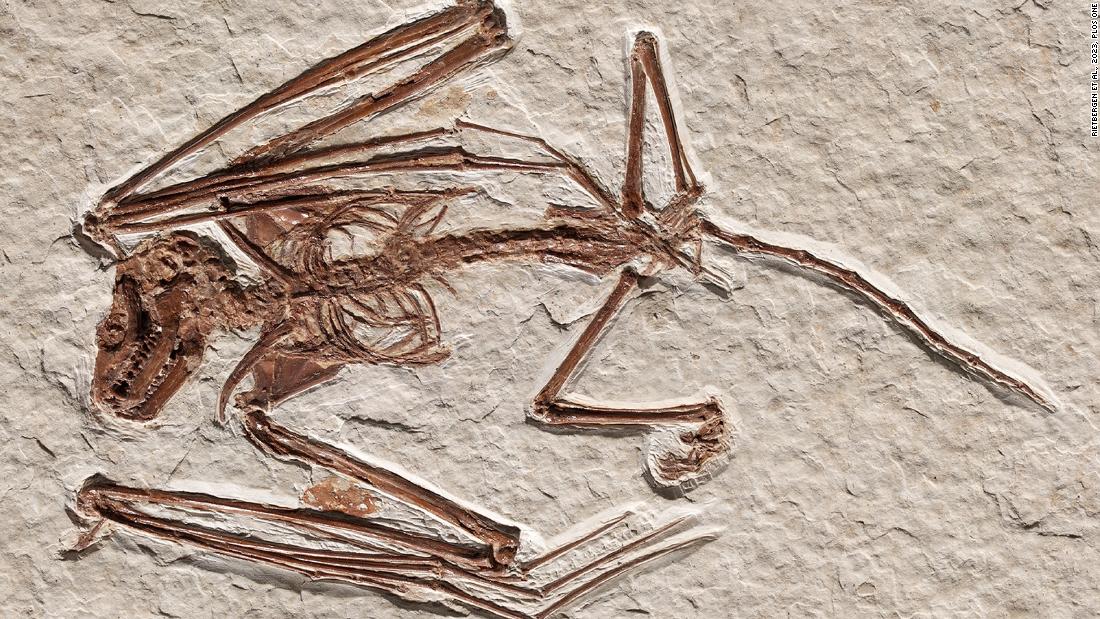How BioWare Finally Got Dragon Age to the Finish Line After a Tumultuous Decade
As our IGN First exploration of Dragon Age: The Veilguard comes to a close, we go inside BioWare to see how it was able to reset Dragon Age: The Veilguard after a tumultuous decade and finally get it to the finish line.

Anticipation was running high within BioWare when Andrew Wilson and Laura Miele, two of EA’s top executives, visited the studio in 2023. They were there to see the latest Dragon Age, which had been in development in one form or another for nearly a decade. It was a chance to show that after struggling through the releases of Mass Effect: Andromeda and Anthem, BioWare was finally back on the right track.
The story of their visit came up more than once in our visit to BioWare for September’s IGN First. Director Corinne Busche, who was conducting the demo, remembers rehearsing for “hours and hours” to make sure she got everything right.
“I knew the content like the back of my hand and everything was going so well. But of course we get to the live demo with Andrew Wilson and Laura Miele in the room, and as soon as I fight a Pride Demon I get walloped right off the edge and down into a pit and die,” Busche laughs. “And he turns and looks at me and goes, ‘Well, at least your load times are great.’”
It was an embarrassing moment for Busche, but in its own way, a victory. At that time, the game that would become Dragon Age: The Veilguard was less than three years removed from a major reset, shifting from the skeleton of a multiplayer game with repeatable quests, a tech base, and the outline of a story, to a full-blown single-player RPG. In that time, BioWare had effectively torn Dragon Age down to the studs, implementing a brand-new battle system along with a host of new content. It was a striking turnaround for a game that at one point looked like it might never release at all.
To cap off our IGN First coverage for Dragon Age: The Veilguard, we’re going to take you inside BioWare on the eve of a major milestone in its history. In the course of reporting on this story, I spent two days at BioWare, played hours of Dragon Age, and had a lengthy sitdown interview with Studio General Manager Gary McKay. Here’s what I found.
BioWare GM Gary McKay is unassuming when you first meet him. He’s older than the average game developer, favors plaid button-ups, and likes to talk about hockey. Hockey comes up a lot around BioWare, actually – it is based in Canada, after all. The studio resides in one of the handful of high-rises overlooking Edmonton’s downtown core, which is dominated by the arena that serves as the home of the Edmonton Oilers. It's appropriate — hockey fans can tell you all about how the Oilers, who enjoyed a dominating stretch in the 1980s, and are now haunted by ghosts of their own.
McKay is the one to give a tour around the current studio space, which opened in late 2019 – just in time for the COVID-19 pandemic to upend onsite work. Like so many other studios, BioWare is a clean, minimalist space identifiable as a game studio mainly by the various trinkets from its past – a Javelin suit from Anthem in the lobby, a Morrigan statue in the window looking down on the Oilers arena, replicas of weapons and helmets from Mass Effect and Dragon Age – with meeting rooms with names like “Jade Empire.”
In a studio so steeped in history, McKay is a relative newcomer. He took over as BioWare General Manager in the wake of Casey Hudson’s second departure after stops at Disney, Marvel, and numerous other studios; in his 25 years career, he worked on Def Jam Vendetta, Turok, and an RPG that was apparently based on the metal group Iron Maiden. He preaches order and a commitment to quality in a studio that at times has been compared to a pirate ship and has experienced a worrying amount of crunch in its history.
“I certainly read a lot of the same stories you did,” McKay says. “I feel like we've brought a little order to the chaos without stifling any creativity.”
McKay inherited a studio that in many respects was not in great shape. In the span between 2017 and 2020, BioWare cycled between multiple GMs as several of its most prominent creators departed. Lead writer David Gaider exited in 2016. Mike Laidlaw, one of Dragon Age’s chief architects, left BioWare in 2017. Former GM Aaryn Flynn left to start his own studio and released Nightingale. Casey Hudson left, came back, and then left again.
In 2020, Dragon Age had yet to enter alpha and was coming out of a period of experimenting with its implementation of multiplayer. Since the release of Inquisition in 2014, BioWare's Dragon Age team had been pulled away multiple times to try and save different projects that were in trouble, canceled at least one version of the sequel, and pivoted to multiplayer. It was the type of development hell that has killed many other projects, or at least badly damaged their quality. In the meantime, the COVID-19 pandemic hit, upending the entire games industry.
It was in this period that BioWare began laying the foundation that would shape its course for the next several years.
“[Dragon Age] was really focused on some pretty clear decisions we needed to make, such as multiplayer, which we decided not to pursue for all the good reasons. And when I think about the state, I think about, ‘What is it that we wanted to do with this game?’ And it was really about going back to our roots and what we're great at, which is single-player hero fantasy games, obviously set in the world of Dragon Age around incredible storytelling. Characters that just jump out at you in the game,” McKay says.
“I mean, the characters in this game… you're filled with love and loss and complex choices, and so, we really wanted to make sure that we are coming back to the heart. So it's not a multiplayer game, it's not micro-transactions, it's an offline game. These are all the things that we really wanted to return to what we feel would be a successful game.”
To that end, BioWare revealed in early 2021 that it was abandoning the development of Anthem Next, pivoting Dragon Age back to being a single-player RPG and handing the reins to Busche, with former co-leads Mark Darrah and Matt Goldman both opting to leave the company (Darrah would later return as a consultant). Busche, a veteran designer with an eye for systems, set about overhauling Dragon Age’s combat and progression.
“Of course, as a multiplayer concept, the battle system at that time was oriented around, ‘What is it like to play with other players?’ And as you can imagine, things like companions weren't nearly as at the forefront as they are now. Your coordination was around other players. So when we went back to our roots, we looked at what worked really well around teamwork, companions, the deep, rich RPG strategies,” she says.
Was it a complete reboot? McKay says no. “No, I don't see it as a reboot. No, I don't see it that way at all. I saw it more about making sure that we are laser-focused on leveraging and leaning into the things that we see as success, things we've had success in, and learning from those things that we saw some challenges in. And just making sure that we obviously learn from them, we grow from them, and then lean into our successes. So, I never personally saw it as a reboot, no.”
Busche largely agrees, " In game development, a large part of your initial efforts are your tech stack, the underlying foundations that drive the game. We'd also learned a lot about how to work within Frostbite, so the nice thing about doing a pivot like this is you're not coming in from square one, and our wonderful narrative writing team had an outline in place of what this story was going to be already. We'd done some of the voice casting already. So those bones still exist today, but from the structure of the game, going to an offline RPG, combat system complete rework, the progression systems are so rich now. That was all from the ground up."
So even if The Veilguard wasn’t a reboot, it was at least a reset – not just for Dragon Age, but for the studio itself. McKay acknowledges the challenge of pivoting from multiplayer to single-player, saying that this was the moment that the “rubber really hit the road” for the studio. It had spent years trying to make multiplayer games. Now it was getting back to what it was good at.
Reminders of BioWare’s early days are everywhere. Darrah, who returned to consult on The Veilguard in 2023, has been around in one capacity or another since the late 1990s. He remembers having to build his own desk after joining BioWare work on Baldur’s Gate as a programmer.
“It was definitely a time of a lot of people who didn't know any better making games,” Darrah says. “And I think there's a power in that because honestly at the time, RPGs, at least Western RPGs, were kind of considered to be a dead genre or a dying genre, and so a team that didn't know any better was able to make something that otherwise a more experienced team might've not even tried to make.”
Over the span of almost 20 years, BioWare went on a remarkable run in which it created a succession of RPGs that are now considered stone cold classics: Baldur’s Gate, Neverwinter Nights, KOTOR, Mass Effect, and Dragon Age. In that time, BioWare became known for its distinctive house style – a mix of romance and humor, deep world-building and memorable characters. It built BioWare a devoted fanbase that it retains to this day.
“What BioWare does best is telling stories through characters,” Darrah says. ”That's always been a strength. But I don't think that we really said it out loud to ourselves and really focused on that kind of storytelling. And when we forgot about it, sometimes we got it anyway, but sometimes we didn't, and that's when our storytelling didn't live up to expectations."
Darrah is one of several longtime BioWare veterans who have had a say in The Veilguard’s development. Creative Director John Epler, meanwhile, got his start on Sonic Chronicles and the Dark Brotherhood and has worked on every Dragon Age since Origins. Working as a cinematic designer on Inquisition, Epler remembers Gaider telling him, “‘[Dragon Age] is a story about people. It's a series about people.’ And for us that's always kind of been the north star that we've kept to. It's about the characters more than anything else. That's the most interesting part of the games of the stories that we tell.”
Storytelling comes up again and again at BioWare, which is home to some of gaming’s most beloved tales. But as BioWare started to shift toward multiplayer, it got away from this core strength. In 2023, Gaider went as far as to claim that writers had become “quietly resented at BioWare” up until the point that he had left in 2016. Hudson assured worried fans that the multiplayer version of Dragon Age would have a story in 2019, but behind the scenes, it wasn’t much more than an outline
“It definitely would have had its challenges,” Epler says. “One thing that always comes up is world state. How do I know if I'm playing with my friend? Do I need to wait for them to catch up? Are they making their own decisions? But even when we were still more multiplayer-focused, we did still want to tell a story about Solas. It just became a lot more challenging because, again, multiplayer games and single-player games have different pressures, have different needs as a project, as a story. And once you add other people's perspectives into it, it becomes even more challenging.”
In the wake of the reset, BioWare set about fleshing out The Veilguard’s story, layering in reams of lore while building out each companion’s arc. As the keeper of the various reference docs containing Dragon Age’s dense history, Epler says he has no shortage of material. “If you told me to write spec for five more Dragon Age games, I could probably come up with that in a couple of weeks because I'm always thinking about Dragon Age,” he says.
The Veilguard has been compared against Dragon Age: Origins, which tends to be seen as the game that bridges BioWare’s CRPG past with its present. Epler, who worked on Origins himself, acknowledges that its darkness and tragedy has “always been part of Dragon Age’s DNA” but also says that wasn’t all that it was. “Something that I think we occasionally lose sight of is Dragon Age: Origins also had moments of levity. You have Alistair kind of comes across as a goofball. There's a lot of funny moments with Dog. And I think it's that contrast that Origins did that we really lean into in the Veilguard. There are characters who are a little bit lighter. But even they have tragedy. They have moments of personal despair.
“Because I think if you just, again, lean super hard into everything being grim all the time, nothing good ever happens, it becomes fatiguing. You kind of lose the sense of impact. You need that contrast between the higher moments, the lighter moments, and dark moments. Because that’s life. Life is not just a series of unending tragedies or a series of unending triumphs. It's a contrast of both and that's how the despair, how the tragedies hit harder.”
But while fans tend to focus on the ways they're different, there are some unexpected ways in which they are the same. Stylized as it is, The Veilguard is also plenty violent, even if its characters aren't constantly spattered in blood like Origins. That's at least partly down to McKay, who half-jokingly says that he wants that "visceral, emotional response when you see some blood."
Within BioWare, McKay has apparently become known as the "more blood guy," periodically leaning in and wondering why one scene or another isn't just a bit more violent. Busche laughs, "I'll never forget when we got the medical triage center stood up, Gary says, 'Wow, this looks really great, but could you zoom in on that cot there – shouldn't this guy be bleeding a lot more.'"
Gary nods, "When you play it and see the blood, you'll think, 'That's the thing Gary was all over.'"
In the meantime, there are also the comparisons that Dragon Age is drawing against Baldur’s Gate 3 – a defiantly old-school RPG that suddenly emerged to become a massive hit en route to winning multiple Game of the Year awards. The histories of Baldur's Gate and Dragon Age are intertwined, with the latter originally starting as a modernized version of BioWare's formative hit. BioWare even tried to create Baldur’s Gate 3 itself back in the 2000s, only for it to be canceled due to an accounting error in one of gaming history’s stranger what-ifs.
BioWare’s reaction is to treat Baldur’s Gate 3’s emergence as a net positive. To The Veilguard’s team, it’s more proof that getting back to the studio’s original strengths was the right move. “Yeah, I didn't really feel that earthquake in terms of people being worried about it. I think what I really saw last year more than anything was a renaissance in the RPG genre,” Darrah says. “Last year was arguably the strongest year we've ever seen in terms of RPGs. Not only do we have [Baldur’s Gate 3], we also had Hogwarts, we also had Starfield, we had tons of RPGs come out last year that covered a really wide swath of what an RPG can be.”
He adds, optimistically, “I think it silenced some of the naysayers. It didn't cause a massive shift in the way The Veilguard was being developed, but I think it made some people who maybe were thinking, ‘Well, we should really be making action games because action games sell 10 million copies and RPGs sell 6 million copies,’ and silenced those voices.”
In Dragon Age lore, the Crossroads is a dimension between the Fade and Thedas that is filled with magical mirrors called Eluvians. Along its paths are reflections and glimpses into the past. It’s only appropriate that this shimmering world in-between should feature so heavily in The Veilguard, as BioWare is at its own version of a crossroads.
Everyone knew what was at stake when EA’s top executives flew up to Edmonton in 2023. Dragon Age was finally making progress, but BioWare had a lot to prove. The development team set up four televisions with demos featuring different areas of the game in a small room called Neverwinter Nights and collectively held its breath.
McKay’s frames the response to the demo this way: “Unbelievable excitement…We spent a full day with him and Laura. And the excitement in Andrew's eyes. The excitement that he was portraying in the meetings was infectious. I know this seems – maybe it doesn't seem so weird – but he inspired us in how he was excited about what he saw, what he thought this is going to unlock for BioWare…again, getting us back to the success that we've had in the past.”
One way or another, the sense of relief within the studio after the demo was palpable. But hard times were still to come. The same month that Baldur’s Gate 3 released, BioWare laid off around 50 workers, including longtime veterans like narrative designer Mary Kirby, who had been with BioWare since Dragon Age’s inception and was, in the words of Gaider, “Varric’s creator, Mistress of the Qunari, Writer of the Chant.” It was Kirby who wrote Lucanis, The Veilguard’s resident assassin.
At a higher level, the layoffs came amid an internal shakeup at EA that effectively resulted in it being split into sports and everything else. That summer, rumors spread within BioWare that it was about to be acquired. Star Wars: The Old Republic was allowed to go third-party, ostensibly so that BioWare could focus on Mass Effect and Dragon Age (McKay won’t comment on the status of Mass Effect, but most rumors suggest that it’s still early in development).
BioWare, it should be said, has long had an interesting relationship with parent company EA. Kotaku’s 2019 report about the state of Dragon Age mentions the sense within BioWare that they are the “weirdos” within a publisher known for its sports games and shooters. EA Sports FC and Madden are what fuel EA, adding billions of dollars to its bottomline. They bring in the kind of revenue that can make even very successful games look like rounding errors.
McKay, for his part, waves away suggestions that BioWare is a mismatch for EA’s portfolio, saying that it “couldn’t be further from the truth” and that EA has been supportive of the studio’s efforts. “I feel that we've had the full support and when you think about the support in terms of giving us the time to deliver on the creative promise of what we wanted to do, we've had 100% support from EA. And we don't even look at it as EA and BioWare necessarily. We've got that support, and there's other titles that are making interesting RPGs as well, and so I don't see it as something separate or something that we're carrying the torch. I just see it as having an incredible support group to allow us to deliver on the promise of what we want to do.”
BioWare’s rollercoaster ride continued through Dragon Age’s reveal in 2024. Reactions to the initial reveal trailer were negative, sending the studio scrambling to release an early gameplay tease just days later to placate fans. The name change from Dreadwolf to The Veilguard wasn’t particularly well-received either. After that, though, impressions were generally very positive. My colleague Alex Stedman wrote in her first hands-on preview, “After hours of hands-on time spread across two days, I’m pleased to say I walked away with excitement and curiosity, but mostly, relief to wave many of my concerns goodbye.” These sentiments were echoed elsewhere, with many critics praising its polish – a miracle given the state of Dragon Age in late 2020.
When I ask Ampere analyst Anna Kerr her expectations, she says she doesn’t have specific data for Dragon Age: The Veilguard, but that overall interest in the series has spiked since its reveal. She notes that June saw about 480K MAUs across Steam, Xbox, and PlayStation, which she rates as positive for a series that saw its last release in 2014. She also says RPGs have been the second most popular genre across PlayStation, Xbox, and Steam in 2024.
As for how important Dragon Age: The Veilguard is for BioWare, she says, “I can't really say without knowing other factors that are only internal, I assume, but obviously there's a lot of passion and love for the Dragon Age series and for BioWare. Fans have high expectations around really any product they deliver. And so it's a question of whether they deliver that with the length of development time and this being another major entry in a beloved franchise. There's a lot at stake, at least, in meeting the expectations of fans.”
No matter how it turns out, BioWare is lucky to be putting out a game at all. History is littered with games that get mired in conflicting visions, get rebooted, and sometimes never make it out at all. Now, McKay says hopefully, "I think we're on the doorstep of something pretty amazing."
When Dragon Age: The Veilguard releases on October 31, one quest will finally end. Another may be about to begin.
Kat Bailey is IGN's News Director as well as co-host of Nintendo Voice Chat. Have a tip? Send her a DM at @the_katbot.
What's Your Reaction?





















































































































.gif)